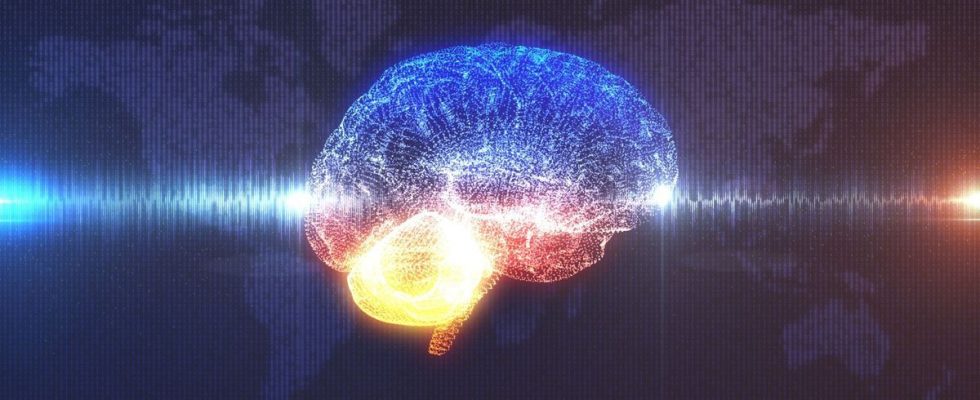Published on
Updated
Reading 3 min.
in collaboration with
Dr Gérald Kierzek (Medical Director of Doctissimo)
French researchers have made an astonishing discovery about how the brain works. They elucidated the mechanisms of the death wave that propagates when deprived of oxygen. This wave does not necessarily signify the death of the individual. It can be reversed by a “resuscitation wave”.
Our brain has not finished revealing all its secrets. Researchers at the Brain Institute in Paris have revealed the existence of a “death wave”, which they were able to detect at a time when the brain is deprived of oxygen. To better understand this phenomenon, experiments were carried out in rats and the study was published in the journal Neurobiology of Disease.
A “death wave” caused by a lack of oxygen
When the brain no longer receives oxygen, its fuel, ATP, runs out. This then results in a disruption of the electrical balance of neurons and a massive release of glutamate, an excitatory neurotransmitter of the nervous system. The activity of the neurons then decreases very sharply… before being reborn by a phenomenon of depolarization, which manifests itself in the form of a high amplitude wave called the “death wave”.
Occurring on the flat electroencephalogram, it then propagates step by step in this brain region until definitive extinction of consciousness in the form of a wave, which alters the function and structure of the brain.
“The death wave” involved in near-death experiences (NDE)
This wave, which spreads throughout the cortex, lasts until the death of the animal. To understand its origin, researchers used, in rats, measurements of local field potentials and recordings of the electrical activity of individual neurons in the primary somatosensory cortex. This area of the brain, divided into different layers, plays an essential role in the representation of the body and the processing of sensory information.
“The neural circuits first seem to turn off… Then we observe a burst of brain activity and in particular an increase in gamma and beta type wavesexplains Séverine Mahon (Inserm), researcher in neuroscience. These are waves usually associated with conscious experience. In this context, it is possible that they are involved in the near-death experiences reported by some people who have survived cardio-respiratory arrest.”.
A wave that begins in the deep layers and spreads throughout the brain
But the observation does not stop there, the researchers have succeeded in retracing the path of this “wave of death”. “We noticed that the activity of neurons was relatively homogeneous at the beginning of cerebral anoxia. Then, the death wave arose at the level of the pyramidal neurons located in layer 5 of the neocortex, and propagated in two directions: upwards, i.e. the surface of the brain, and downwards, i.e. the white matter. explains Séverine Mahon. “We observed this same dynamic in different experimental conditions, and believe that it could exist in humans.”
The deep layers of the cortex are therefore the most vulnerable to oxygen deprivation – in particular because the pyramidal neurons of layer 5 have very high energy needs.
We can reverse the wave of death
But this is not a sign of death, because although it appears in cases of anoxia, it also disappears when the brain is replenished with oxygen. In its place, a mirror wave appears, which propagates and announces the resumption of brain functioning, with a slow recovery of cerebral functions. This resuscitation wave thus allows the resumption of brain activity, the nerve cells rebuilding their ATP reserves.
(Neural) death takes its time…
This study therefore provides new elements in the understanding of human brain activity. This discovery also demonstrates that brain death is a phenomenon spread over time and does not operate in an on-off mode. “It is now established that from a physiological point of view, death is a process that takes its time… and that it is currently impossible to strictly dissociate it from life. We also know that a flat EEG does not necessarily mean a permanent cessation of brain functions. estimates Professor Stéphane Charpier (Sorbonne University), head of the research team.
With these results, the researcher is already announcing the next step and concludes: “From now on, it will be necessary to establish under what exact conditions these functions can be restored, in order to develop neuroprotective drugs to support resuscitation in the event of heart and lung arrest.“.
